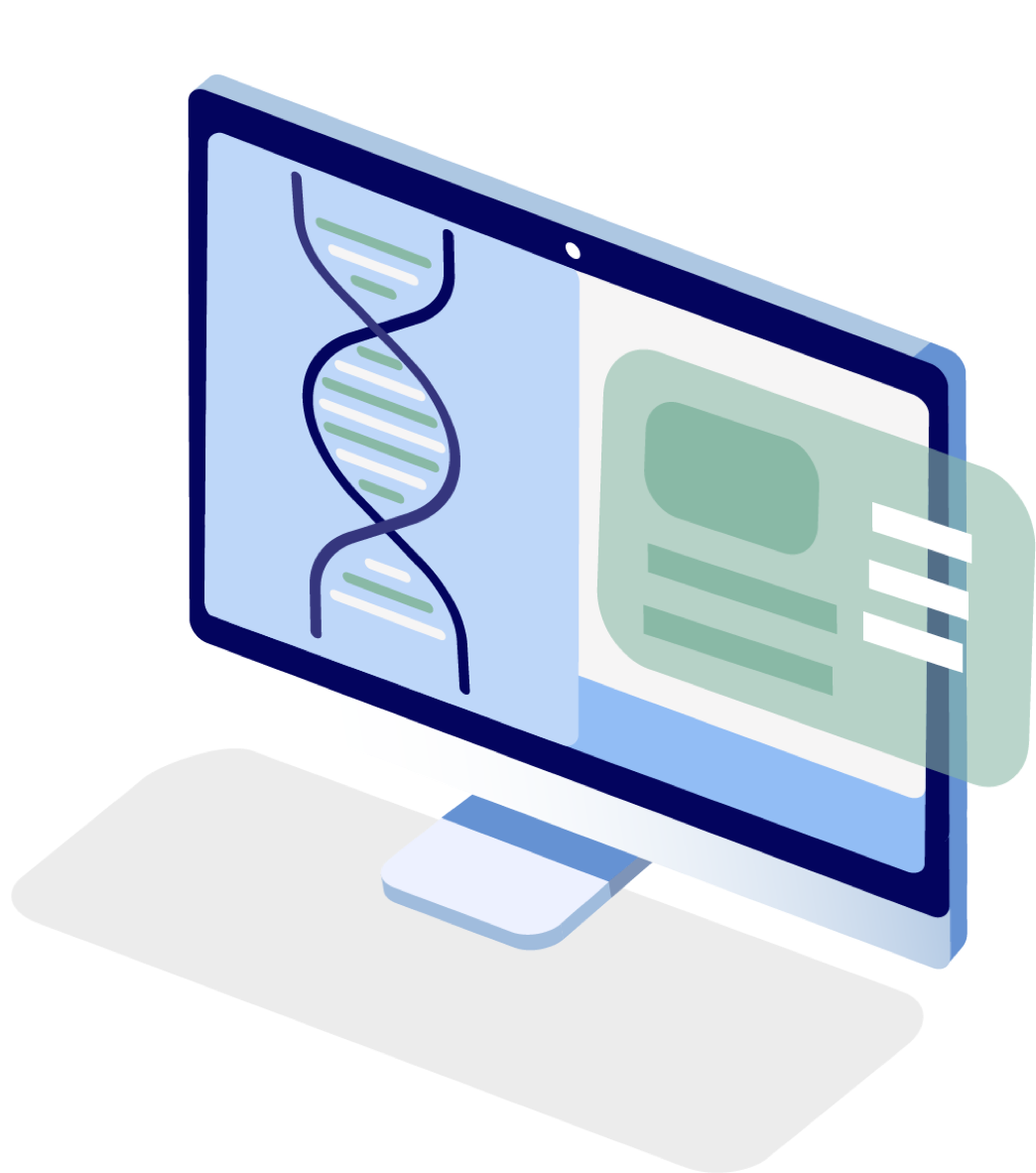03 Understanding Gene Therapy
Section 1
What is Gene Therapy?

Learning Goal
To understand what gene therapy is and what it is designed to do.
Gene therapy involves modifying a person’s genetic material to potentially treat or prevent a disease or disorder. Unlike most standard treatments, such as surgery or oral medication, gene therapies are designed to address the main cause of genetic disorders by restoring or providing a functioning therapeutic gene into target cells.1,2
The genetic material used for gene therapy is usually a therapeutic gene also known as a transgene. Therapeutic genes are manufactured using recombinant DNA technology, a technique that combines sequences of DNA that would not otherwise be found together.3
Here we summarize three different techniques used in gene therapy. Some of these techniques are currently used in clinical practice, while others are not yet approved and are being evaluated in clinical trials.
- Gene addition (also called gene augmentation) introduces a therapeutic gene that helps the cell produce a functional protein, such as an enzyme, that it could not previously produce adequately.4,5 This method involves use of a vector to deliver the therapeutic gene and can be used for both in vivo and ex vivo gene therapy.5 The vector design can be based on viral or non-viral genetic sequences. Two examples of gene addition are
in vivo gene therapy using adeno-associated viral vectors (AAV) and ex vivo gene therapy using lentiviral vectors. Learn more about these vectors in “How is Gene Therapy Delivered.” - Gene editing, a technique also known as genome editing, has the ability to change a gene by using an enzyme that acts as a molecular “scissors” to insert, delete, or edit a DNA sequence. CRISPR is an acronym for clustered regularly interspaced short palindromic repeats. It is an example of gene editing technology that can cut a gene to inactivate it, or it can cut and paste new genetic material to correct a gene.6-8
- Gene silencing is a technique that inactivates, “knocks down,” or “switches off,” a gene that is not functioning properly. It works through the use of a molecule that can identify and break down the messenger RNA (mRNA) that carries instructions that do not make a fully functional protein; the molecule “censors” a specified message from the mRNA, preventing the protein from being “broadcast” into the cell, thus silencing the gene that provides the instructions. RNA interference (RNAi) technology is one example of a gene silencing method that is increasingly used today.9-11
Additional Interesting Fact
The U.S. Food and Drug Administration (FDA) has approved 20 cell and gene therapy products as of October 2021,13 and accepted more than 900 investigational new drug (IND) applications for ongoing clinical studies of gene therapies.12
Key Learnings
Gene therapy, the use of genetic material for the potential long-term treatment of a genetic disorder, is designed to address the main cause of the disorder by restoring or providing a functioning therapeutic gene (also known as a transgene) into a target cell.
Recombinant DNA technology is used to produce the therapeutic gene used in gene therapy.
Researchers are currently investigating different types of gene therapy, including gene addition, gene editing, and gene silencing.
Continue learning about gene therapy in the next section
Section 2
How is Gene Therapy Delivered?
To understand the role of vectors in delivering a therapeutic gene into cells and learn about the types of vectors used in gene therapy.
References
- Gene therapy. Mayo Clinic; 2021. https://www.mayoclinic.org/tests-procedures/gene-therapy/about/pac-20384619. Accessed December 22, 2021.
- What Is Gene Therapy? How Does It Work? U.S. Food & Drug Administration (FDA); 2017. https://www.fda.gov/ForConsumers/ConsumerUpdates/ucm589197.htm. Accessed December 22, 2021.
- Khan S, Ullah MW, Siddique R, et al. Role of recombinant DNA technology to improve life. Int J Genomics. 2016;2016:2405954. doi: 10.1155/2016/2405954. [PubMed]
- How does gene therapy work? Help Me Understand Genetics: Gene Therapy and Other Medical Advances. MedlinePlus Genetics. U.S. National Library of Medicine, National Institutes of Health, U.S. Department of Health and Human Services; 2021. https://medlineplus.gov/genetics/understanding/therapy/procedures/. Accessed December 22, 2021.
- The potential of gene therapy. STAT; 2018. https://www.statnews.com/sponsor/2018/11/20/the-potential-of-gene-therapy/. Accessed December 22, 2021.
- Fridovich-Keil JL. Gene editing. Encyclopedia Britannica; 2019. https://www.britannica.com/science/gene-editing. Accessed December 22, 2021.
- What is CRISPR-Cas9? Yourgenome.org; 2016. https://www.yourgenome.org/facts/what-is-crispr-cas9. Accessed December 22, 2021.
- Gillmore JD, Gane E, Taubel J, et al. CRISPR-Cas9 in vivo gene editing for transthyretin amyloidosis. N Engl J Med. 2021;385(6):493-502. [PubMed]
- Redberry G. Gene Silencing: New Research. Nova Science Publishers; 2006. ISBN 9781594548321.
- Hood E. RNAi: what’s all the noise about gene silencing? Environ Health Perspect. 2004;112(4):A224-A229. [PubMed]
- Mocellin S, Provenzano M. RNA interference: learning gene knock-down from cell physiology. J Transl Med. 2004;22(1):39. doi: 10.1186/1479-5876-2-39. [PubMed]
- FDA continues strong support of innovation in development of gene therapy products. U.S. Food and Drug Administration (FDA); 2020. https://www.fda.gov/news-events/press-announcements/fda-continues-strong-support-innovation-development-gene-therapy-products#:~:text=To%20date%2C%20the%20FDA%20has,material%20into%20a%20patient’s%20cells. Accessed December 22, 2021.
- Approved cellular and gene therapy products. U.S. Food and Drug Administration (FDA); 2021. Available at: https://www.fda.gov/vaccines-blood-biologics/cellular-gene-therapy-products/approved-cellular-and-gene-therapy-products. Accessed December 22, 2021.